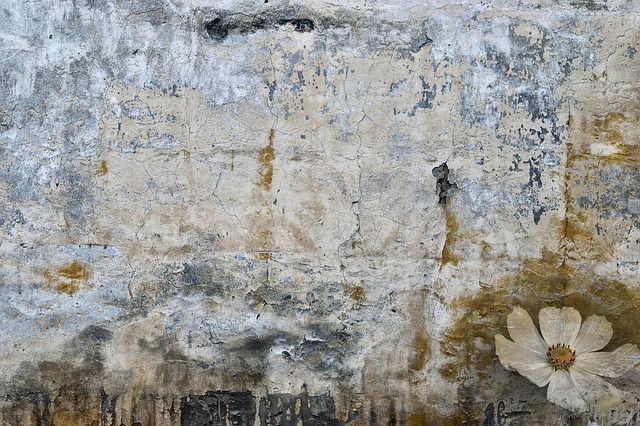Humidity inside the home can be generated due to a combination of various factors. When there are climatic conditions with high levels of humidity and apart from that, the ventilation inside the house is not adequate; this can make the property a site that threatens the health of the people who inhabit it, which means that it is impossible to live in the house until this problem is resolved.

It is essential that as soon as you notice any sign of humidity inside the home, no matter how minimal, you start to eliminate it before it gets worse, since in this way, the proliferation of mold, bad odors and, in the worst cases, could be avoided. Extremes, the deterioration in much of the house.
Moisture problems typically occur during the winter and fall seasons, which are the wet or cold seasons. But you will have a sick home throughout the year, so you have to fix it to clean up your home.
In houses that do not have adequate ventilation, humidity usually appears more easily, generating unpleasant aromas, mold stains, capillarity, and water condensation and also causes other effects that are not so noticeable but that can still occur. Be very harmful not only for housing but also for the health of the inhabitants.
The truth is that almost all houses have humidity. For many people it may be surprising to know this fact, however, it is normal for between 10 to 15 liters of water to be produced within a building every day. Of course we don’t always see them, but they are there. And if you see them, it is because there is a clear problem that you have to fix.
There are several sources that generate that amount of water, such as: sweat, breathing itself, showering and even cooking. This moisture evaporates inside the home and remains in the environment. However, there is nothing to worry about, as long as the humidity levels do not exceed normal limits.
The drawbacks occur when humidity levels are excessive, especially when it is generated in several places in the house, causing small animals such as mites to appear, thus increasing allergic reactions and other complications closely linked to the structure of the property.
What do you need
- Identify the type of humidity that is generated inside the home.
- A correct waterproofing of the walls.
- Frequent cleaning in each space of the house.
- Cleaning products.
- Moderate heating systems.
- Dehumidifiers.
Instructions
Types of humidity
Condensation humidity
- It is one of the most frequent types of humidity inside a home. It is generated when there are high levels of humidity in the environment, which causes water condensation to appear in the coldest areas of the house. Condensation usually varies depending on the ambient temperature. In the coldest spaces of the home it increases, especially on exterior walls, facades and in areas of the house that are not usually absorbent, as is the case with mirror and window panes, and tiling. Causing various inconveniences for health and also for the stability of the foundations of the building.
- When there is the presence of condensation in the house, it is very easy to identify it, since green or dark stains usually appear on the walls, fungi, mist on mirrors and glass, and also a very unpleasant odor that is produced due to the same humidity. In some cases, humidity can seem like an aesthetic problem in the home, however, when mites and mold are present; this can become a much more serious problem for the furniture and the health of those who live in the house., increasing the risk of diseases such as asthma and allergies or other respiratory conditions.
- This type of humidity is usually generated by several factors, among which we can mention the lack of ventilation, incorrect use of heating systems and poor thermal insulation in walls and walls.
- One of the simplest solutions to avoid humidity due to condensation is to open the doors and windows for a few minutes so that the air inside the house is renewed and the risks of humidity are reduced.
- Currently, many homes are usually too hermetic, which increases the possibility of the appearance of humidity, especially in bathrooms where ventilation is usually poorer. For cases like these, it is best to install mechanical ventilation systems that are very useful when it comes to extracting and renewing the air that is inside the house.
- In the same way, it is also recommended to carry out cleaning using fungicidal products in each of the spaces affected by humidity. This is done in order to kill off as many fungi and mold as possible. Then it is necessary to paint the surfaces damaged by moisture using a special paint for waterproofing.
- Subsequently, it is essential that we ensure that the temperature inside the building is constant. Normal would be between 18 and 21 °C. To increase protection against humidity, you can also install dehumidifiers. This will reduce the humidity by about 50%.
Moisture per filtration
- Like the previous one, see page dampness is quite common in many homes. It occurs when the water begins to seep through the cracks in walls and walls, which normally cause damp spots inside the interior walls of the building.
- There are several causes of this type of humidity. Among those that we can mention are: cracks located in retaining walls, inadequate waterproofing or incorrect execution of expansion joints.
- This type of humidity usually worsens when the house was not built with the appropriate practices, where the use of materials with a fairly bad relationship in terms of the water-cement combination can be highlighted, as well as the placement of ineffective joints..
- Each of these problems causes water to pass through the walls causing mold to appear, the paint on the walls to start to crack, or the iron in the beams to rust and serious damage to the structure. Excessive seepage moisture can cause small streams of water to flood a basement, leaving the walls and siding completely deteriorated.
- People who suffer from respiratory health problems should stay away from environments where this type of humidity exists, since their health can worsen.
- The most efficient way to treat moisture by filtration is to break the wall or wall through which the water is filtering and, later, use a series of special mortars to prevent moisture from entering the building again and thus leaving the wall in the right conditions. This must be done in all the spaces of the house where there is the presence of leaks.
Moisture by capillarity
- It occurs when water rises through the foundations, rising up walls and walls. In other words, rising damp normally begins in the lowest parts of buildings, such as the basement, and then begins to rise through walls and walls, depending on the amount of water absorbed.
- In a slightly more summarized way, this type of humidity occurs through a quite natural process that makes it easier for the water from the lower parts to rise through the capillary pores belonging to the materials that were used for the construction of the house.
- The humidity located at the base of the building begins to evaporate, especially in the areas where there is a higher level of perspiration; this causes several of the materials to absorb it, causing it to rise up the walls and walls.
- Rising damp shows up as damp patches just below the walls, as well as damp that are dark in color, damaged baseboards, and damp lines. In addition, the lifting of the wall covering is generated and causes an excessively humid environment.
- The effects caused by this humidity affect the health of the people inside the house and the structure of the house itself, making the home not comfortable at all, because the walls begin to crack, unpleasant odors appear that remain in the environment and breathing difficulties worsen. There may also be damage to various household items.
- There are several ways to combat this type of humidity in homes. Currently, we can find a wide variety of solutions, such as electro-physical treatments and injection of resins and electro-osmosis, which have become the most efficient solution when it comes to completely eliminating moisture produced by capillarity.
- Wireless electro osmosis is one of the most effective and modern treatments on the market to counteract rising damp. It is mainly based on the use of electronic equipment that has the capacity to substitute the order of polarity possessed by the water molecules located inside the wall and also in the ground, causing them to descend through the wall, reaching the underground. Since water can no longer enter the wall, it begins to dry out naturally, evaporating the little remaining water. This means that you never have to worry about moisture problems again.
Tips
- Always maintain adequate ventilation, especially in closed spaces such as bedrooms and bathrooms.
- Carry out general cleaning constantly.
- The heating system should always be kept at a moderate level.
- Acquire dehumidifying equipment to guarantee low humidity levels.
- In the event that humidity has caused serious problems inside the property, it is best to go to an expert in the sector to tell you what you should do about it.








